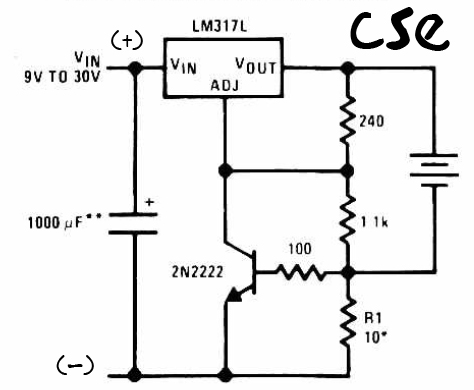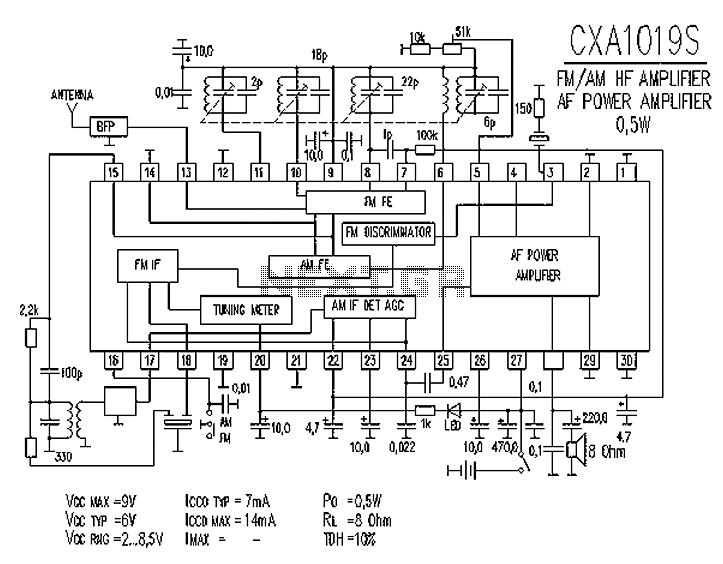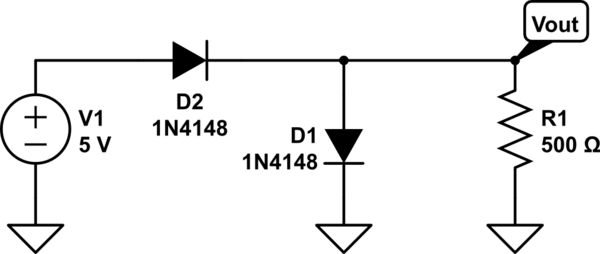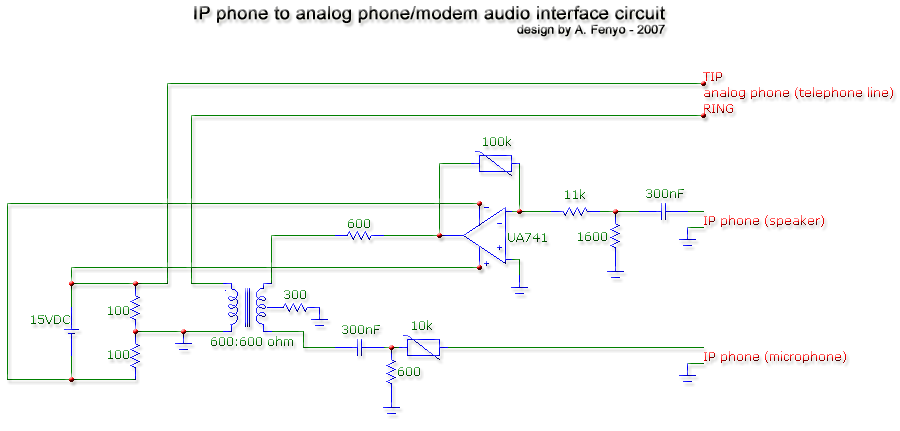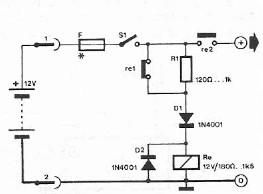
It used to delay the monostable multivibrator circuit diagram of a continuous sequence
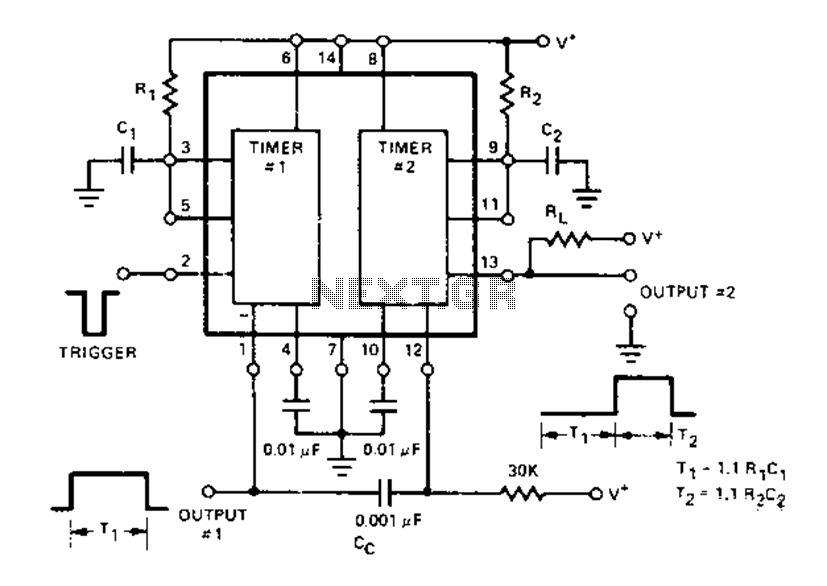
The Dual Timer Exar XR-2556 features a timing mechanism that can be triggered through capacitive coupling on a secondary timing pin. When a trigger input is engaged, the duration T1 can be set to 1.1R1C1, resulting in an increased output for Output 1, which subsequently decreases due to the CC-shot timer on Output 2. Pin 13 also experiences an increased duration T2, defined as 1.1R2C2. This configuration operates similarly to a delay monostable multivibrator. The device operates with a supply voltage ranging from 4.5V to 16V, and the resistance (R) can maintain the timing of the supply voltage output below 200mA.
The Exar XR-2556 is a versatile dual timer IC designed for precise timing applications. It operates with a supply voltage of 4.5V to 16V, making it suitable for a variety of electronic circuits. The timing intervals are determined by external resistor-capacitor (RC) networks connected to each timer channel. The output of the first timer (Output 1) can be programmed to remain high for a duration T1, which is calculated using the formula T1 = 1.1 * R1 * C1, where R1 is the resistance in ohms and C1 is the capacitance in farads.
Upon triggering the first timer, the output will initially increase, providing a high signal for the duration specified by T1. Following this, the output will decrease, transitioning to a low state, which is controlled by the second timer (Output 2). This second timer can be triggered through a capacitive coupling mechanism, allowing for flexible timing applications. The duration T2 for the second timer is similarly defined by the equation T2 = 1.1 * R2 * C2.
Pin 13 of the XR-2556 plays a crucial role in extending the timing capabilities of the device, effectively allowing for the creation of monostable multivibrator functions. This feature is particularly useful in applications requiring precise timing control, such as pulse generation, delay circuits, or signal conditioning. The maximum output current is limited to 200mA, ensuring that the device can drive moderate loads without risk of damage.
Overall, the Exar XR-2556 dual timer is an effective solution for implementing timing functions in electronic circuits, providing designers with the flexibility to create complex timing sequences and control logic in a compact and efficient manner.Dual Timer Exar XR-2556 for the first time after the timing of the output can be triggered by capacitive coupling second timing pin. When the trigger input is used, in order to be able to equal the duration T1 1.1R1C1, output 1 will be increased, then decreased by CC-shot timer 2. Pin 13 is then also increased its duration T2 equal 1.1R2C2, its function and delay monostable multivibrator function is the same.
Supply voltage 4.5-16V. R can keep the timing of the supply voltage output below 200mA.
The Exar XR-2556 is a versatile dual timer IC designed for precise timing applications. It operates with a supply voltage of 4.5V to 16V, making it suitable for a variety of electronic circuits. The timing intervals are determined by external resistor-capacitor (RC) networks connected to each timer channel. The output of the first timer (Output 1) can be programmed to remain high for a duration T1, which is calculated using the formula T1 = 1.1 * R1 * C1, where R1 is the resistance in ohms and C1 is the capacitance in farads.
Upon triggering the first timer, the output will initially increase, providing a high signal for the duration specified by T1. Following this, the output will decrease, transitioning to a low state, which is controlled by the second timer (Output 2). This second timer can be triggered through a capacitive coupling mechanism, allowing for flexible timing applications. The duration T2 for the second timer is similarly defined by the equation T2 = 1.1 * R2 * C2.
Pin 13 of the XR-2556 plays a crucial role in extending the timing capabilities of the device, effectively allowing for the creation of monostable multivibrator functions. This feature is particularly useful in applications requiring precise timing control, such as pulse generation, delay circuits, or signal conditioning. The maximum output current is limited to 200mA, ensuring that the device can drive moderate loads without risk of damage.
Overall, the Exar XR-2556 dual timer is an effective solution for implementing timing functions in electronic circuits, providing designers with the flexibility to create complex timing sequences and control logic in a compact and efficient manner.Dual Timer Exar XR-2556 for the first time after the timing of the output can be triggered by capacitive coupling second timing pin. When the trigger input is used, in order to be able to equal the duration T1 1.1R1C1, output 1 will be increased, then decreased by CC-shot timer 2. Pin 13 is then also increased its duration T2 equal 1.1R2C2, its function and delay monostable multivibrator function is the same.
Supply voltage 4.5-16V. R can keep the timing of the supply voltage output below 200mA.
